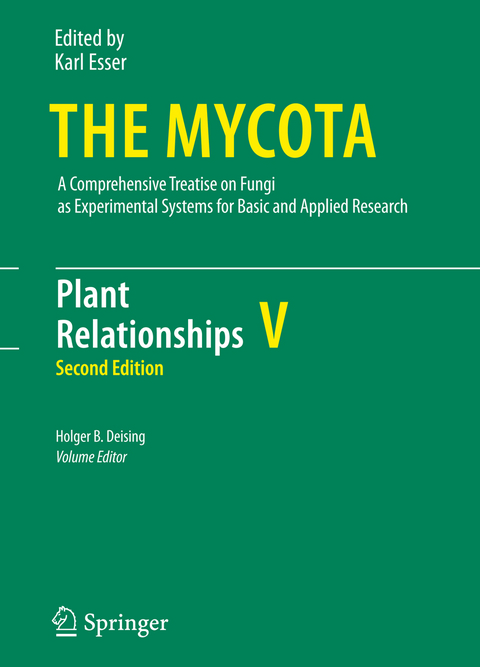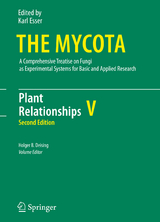Plant Relationships
Springer Berlin (Verlag)
978-3-540-87406-5 (ISBN)
Since the publication of the first edition of "The Mycota Vol. V - Plant Relationships" in 1997, tremendous advances in fungal molecular biology and biochemistry have taken place; and both light and electron microscopical techniques have improved considerably. These new insights led to a better understanding of the relationships between fungi and plants; and a completely revised new edition of Plant Relationships could be produced, providing an up-to-date overview on mutualistic and pathogenic interactions.
In 18 chapters internationally acknowledged authors present reviews on fungal lifestyles, mechanisms of their interactions with their host plants, signal perception and transduction, and plant defense responses directed against attack by fungal pathogens.
Highlighting the recent developments in fungus-plant interactions, this volume is indispensable for researchers, lecturers and students in microbiology, mycology and plant sciences, including plant pathology.
Profiles in Pathogenesis and Mutualism.- Cellular and Molecular Biology of Phytophthora-Plant Interactions.- Botrytis cinerea: Molecular Aspects of a Necrotrophic Life Style.- Profiles in Pathogenesis and Mutualism: Powdery Mildews.- The Uredinales: Cytology, Biochemistry, and Molecular Biology.- The Sebacinoid Fungus Piriformospora indica: an Orchid Mycorrhiza Which May Increase Host Plant Reproduction and Fitness.- Mechanisms of Pathogenic and Mutualistic Interactions.- Biomechanics of Spore Release in Phytopathogens.- Gene for Gene Models and Beyond: the Cladosporium fulvum-Tomato Pathosystem.- The cAMP Signaling and MAP Kinase Pathways in Plant Pathogenic Fungi.- The Secretome of Plant-Associated Fungi and Oomycetes.- From Tools of Survival to Weapons of Destruction: The Role of Cell Wall-Degrading Enzymes in Plant Infection.- Photoactivated Perylenequinone Toxins in Plant Pathogenesis.- Programmed Cell Death in Fungus-Plant Interactions.- The Ectomycorrhizal Symbiosis: a Marriageof Convenience.- Establishment and Functioning of Arbuscular Mycorrhizas.- Epichloë Endophytes: Clavicipitaceous Symbionts of Grasses.- Lichen-Forming Fungi and Their Photobionts.- Plant Response.- Signal Perception and Transduction in Plants.- Defence Responses in Plants.
| Erscheint lt. Verlag | 4.2.2009 |
|---|---|
| Reihe/Serie | The Mycota |
| Zusatzinfo | XXII, 398 p. |
| Verlagsort | Berlin |
| Sprache | englisch |
| Maße | 203 x 276 mm |
| Themenwelt | Naturwissenschaften ► Biologie ► Mikrobiologie / Immunologie |
| Schlagworte | biochemistry • Biotrophie • biotrophy • fungal pathogenicity • Fungi • genes • Microbiology • molecular aspects • mutualism • Mutualismus • Mycology • necrotrophy • Nekrotrophie • Oomycetes • Orchid • pathogen • Pathogene • pflanzliche Abwehr • Pilzliche Pathogenität • plant defense • plant pathology • Spore • Toxin |
| ISBN-10 | 3-540-87406-2 / 3540874062 |
| ISBN-13 | 978-3-540-87406-5 / 9783540874065 |
| Zustand | Neuware |
| Haben Sie eine Frage zum Produkt? |
aus dem Bereich




